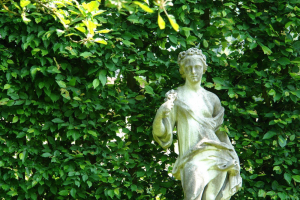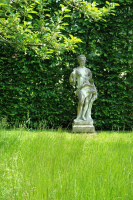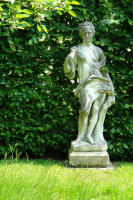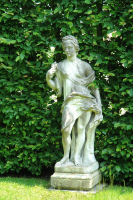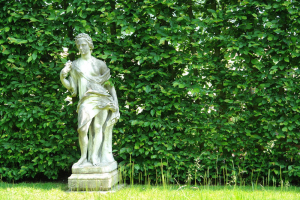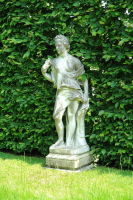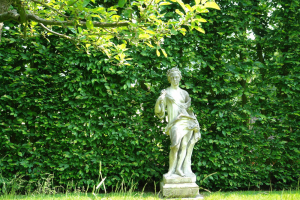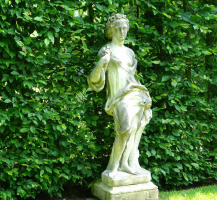- Home
- 18th century French marble garden figure of Flora
18th century French marble garden figure of Flora
A marble garden figure of Flora, probably France, 18th century, carved in full round with separate base; in her right hand she is holding an horn of plenty, her hair adorned with a garland of flowers; from a Hessian private collection--
Dimensions: height ca. 165/ 185 cm
Condition: good condition
Reference: NA022018/391//ALK032018
Literature:
In Roman mythologie, Flora was a goddess of flowers and the season of spring. While she was otherwise a relatively minor figure in Roman mythology, being one among several fertility goddesses, her association with the spring gave her particular importance at the coming of springtime. Her festival, the Floralia, was held between April 28 and May 3 and symbolized the renewal of the cycle of life, drinking, and flowers. The festival was first instituted in 240 B.C.E but on the advice of the Sibylline books she was given another temple in 238 B.C.E. Her Greek equivalent was Chloris. Flora was married to Favonius, the wind god, and her companion was Hercules. Her name is derived from the Latin word flos which means flower. In modern English, Flora also means the plants of a particular region or period. Flora achieved more prominence in the neo-pagan revival of Antiquity among Renaissance humanists han she had ever enjoyed in ancient Rome.Source: Wikipedia
Antieke Tuinornamenten
Viooltjesdreef 39031 Baarle-aan-de-Leie
info@antieke-tuinornamenten.be+32 (0) 9 282 20 97+32 (0) 475 53 41 63
Opening hours
Bezoek aan de tuin enkel na afspraak.

